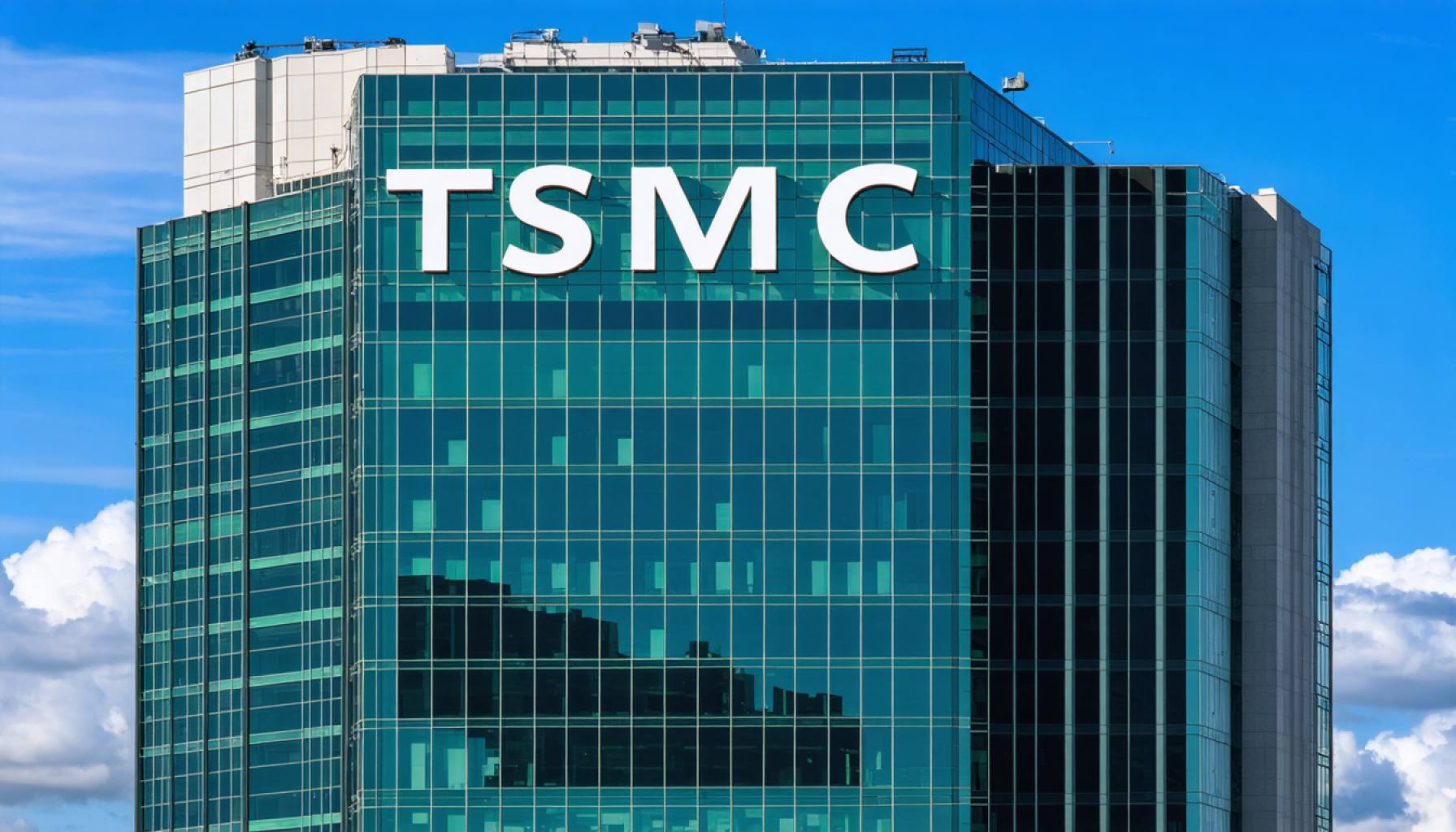- TSMC shares surged by 4.5% amid stock market volatility, outperforming the S&P 500 and Nasdaq Composite.
- The spike followed a 145% tariff on Chinese goods, initially shaking TSMC’s stock but ultimately presenting a buying opportunity for investors.
- President Trump’s 90-day pause on certain tariffs lifted market spirits, though concerns about U.S.-China trade tensions persist.
- TSMC remains strong, leveraging its leadership in AI chip manufacturing, with a tempting forward P/E ratio of 17.5.
- Geopolitical uncertainties, especially regarding Taiwan, pose challenges, influencing investor sentiment.
- Investors should weigh market volatility against TSMC’s strategic position and the broader geopolitical context.
Amid the stock market’s swirling tempest this week, Taiwan Semiconductor Manufacturing Company (TSMC) has skillfully navigated the stormy seas of financial speculation and emerged with commendable resilience. As of Friday afternoon, TSMC’s shares rallied with a robust 4.5% gain, while the broader S&P 500 and Nasdaq Composite indices saw more modest bumps of 1.6% and 2%, respectively.
The turmoil began with an unexpected twist—a brutal 145% tariff enacted on imported Chinese goods that initially rocked TSMC’s share value. However, like a seasoned sailor adjusting to sudden gusts, informed investors swiftly seized the opportunity to reinvest, fueling an impressive comeback that day.
Beneath this week’s market volatility lies a complex web of geopolitical strategies and economic maneuvers. Recent announcements by President Donald Trump of a 90-day hiatus on some tariffs have reinvigorated market sentiment, sparking hope for a temporary truce in global trade tensions. Yet, the situation remains precarious. Investors are acutely aware of the fragility of such agreements and the potential for renewed disputes, particularly in the delicate dance between the U.S. and China.
TSMC finds itself at the confluence of these global undercurrents. Despite the turbulence, the company’s fundamentals remain robust, driven by its leadership in the burgeoning artificial intelligence chip manufacturing sector. Its forward price-to-earnings ratio, now at a tempting 17.5, suggests undervaluation against the backdrop of its strategic positioning and innovative prowess.
Yet caution prevails in this uncertain climate. The specter of geopolitical tension looms, with apprehensions about potential conflict over Taiwan adding layers of complexity. As TSMC’s stock reflects larger market anxieties, it also offers a barometer for investor sentiment regarding the intricate geopolitical and economic dance.
While TSMC’s remarkable ability to weather economic storms illustrates its sturdy resilience, prospective investors must tread carefully, considering both the immediate market fluctuations and the long-term geopolitical landscape. As the global stage continually shifts, keeping a keen eye on TSMC’s navigation strategies could reveal valuable insights for astute investors charting their course through these choppy waters.
TSMC’s Strategic Navigation: Lessons from a Market Storm
Introduction
Taiwan Semiconductor Manufacturing Company (TSMC) has once again demonstrated its resilience in the face of market volatility, emerging unscathed from a tumultuous week marked by geopolitical tensions and financial speculations. Let’s explore some additional insights about TSMC’s market strategies, its role in the semiconductor industry, and how investors can leverage this information.
TSMC’s Strategic Position and Market Influence
1. Leadership in Semiconductor Manufacturing: TSMC is a prominent player in the semiconductor industry, holding a significant share in global semiconductor production. As the world’s leading dedicated independent semiconductor foundry, TSMC plays a critical role in the technological ecosystem, supplying chips for major technology firms like Apple, NVIDIA, and Qualcomm.
2. Innovation and Technology: TSMC’s commitment to innovation is evident in its continuous advancements in semiconductor technology, including the development of cutting-edge nodes such as 3nm and 5nm processes. These innovations are crucial as industries increasingly rely on advanced semiconductors for AI, IoT, and 5G applications.
3. Geopolitical Sensitivities and Tariffs: The recent tariff imposition and the geopolitical friction between the U.S. and China underscore the importance of TSMC’s strategic maneuvers. Geopolitical tensions can have significant repercussions on supply chains and market positions within the tech industry.
Market Forecasts & Industry Trends
– Growth in AI and IoT: The demand for semiconductor chips is expected to grow exponentially, driven by emerging technologies like AI and IoT. This trend is poised to fortify TSMC’s market leadership and expand its revenue streams.
– 5G Expansion: As global 5G deployment accelerates, TSMC’s expertise in manufacturing high-performance chips will be pivotal in supporting the infrastructure needed for next-generation networks.
Pros & Cons Overview
– Pros:
– Dominant market position and extensive customer base.
– Strong financials with a forward P/E ratio of 17.5, indicating potential undervaluation.
– Technological leadership with cutting-edge manufacturing capabilities.
– Cons:
– Vulnerability to geopolitical tensions and shifts in international trade policies.
– Dependence on a few major clients, making TSMC sensitive to changes in their strategies.
– Environmental and sustainability challenges related to semiconductor production processes.
Pressing Questions and Useful Answers
– How does TSMC handle geopolitical risks?
TSMC mitigates risks through diversification and strategic relationships, while maintaining technological superiority and flexible manufacturing operations.
– What impact does the semiconductor shortage have on TSMC?
The global semiconductor shortage highlights TSMC’s vital role in supply chains and underscores its bargaining power in the industry, potentially boosting its profitability.
Actionable Recommendations
– Invest with Caution: Prospective investors should consider both immediate market conditions and the broader geopolitical landscape. Diversifying portfolios and keeping abreast of geopolitical developments will help mitigate risks.
– Stay Informed: Regularly monitor industry trends, particularly in AI, IoT, and 5G, as they offer insights into future growth opportunities for TSMC.
– Sustainability Focus: Pay attention to TSMC’s sustainability initiatives, as environmental concerns are increasingly influencing investment decisions.
For more information on TSMC and its global influence, check out the official site of TSMC.
By understanding TSMC’s strategic position, technological advancements, and the challenges posed by geopolitical dynamics, investors can make informed decisions that harness the potential of the semiconductor industry’s future.
